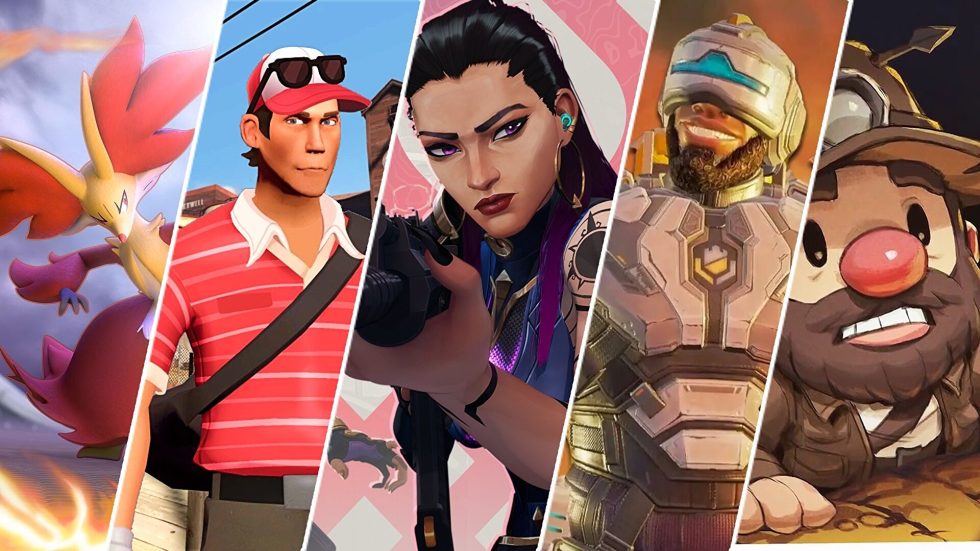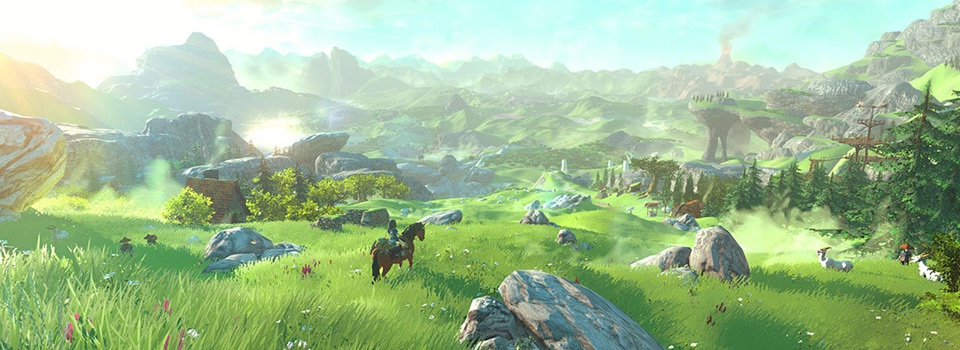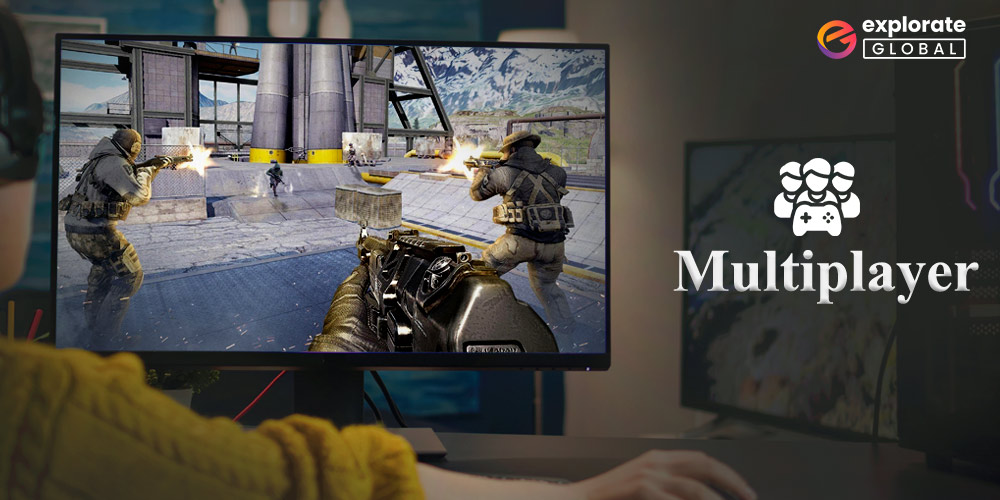The Evolving Landscape Of Free-to-Play Online Games In 2025: A Comprehensive Look
The Evolving Landscape of Free-to-Play Online Games in 2025: A Comprehensive Look
Related Articles: The Evolving Landscape of Free-to-Play Online Games in 2025: A Comprehensive Look
Introduction
With enthusiasm, let’s navigate through the intriguing topic related to The Evolving Landscape of Free-to-Play Online Games in 2025: A Comprehensive Look. Let’s weave interesting information and offer fresh perspectives to the readers.
Table of Content
The Evolving Landscape of Free-to-Play Online Games in 2025: A Comprehensive Look

The realm of online gaming has undergone a dramatic transformation, with free-to-play (F2P) models becoming the dominant force in the industry. This trend, fueled by technological advancements, shifting consumer preferences, and innovative business models, is poised to continue its trajectory into 2025 and beyond. This article delves into the evolving landscape of free-to-play online games in 2025, exploring its key characteristics, benefits, and potential challenges.
The Rise of Free-to-Play: A Paradigm Shift
The free-to-play model has revolutionized the gaming industry, offering players access to a vast library of games without upfront costs. This accessibility has resulted in a significant increase in the player base, attracting both casual and hardcore gamers. The traditional pay-to-own model, where players purchase games upfront, has faced a decline in popularity, making way for the F2P model’s monetization strategies.
Monetization Strategies: A Balancing Act
Free-to-play games generate revenue through a variety of monetization strategies, carefully designed to incentivize spending while maintaining a positive player experience. These strategies include:
- In-Game Purchases: This model allows players to purchase virtual items such as cosmetic enhancements, power-ups, and currency, enhancing their gameplay experience.
- Subscription Services: Players can subscribe to premium services that offer exclusive content, benefits, and features.
- Advertisements: Displaying targeted advertisements within the game environment can generate revenue, although this method often faces criticism for being intrusive.
- Microtransactions: Small, frequent purchases of virtual goods, often driven by the "psychological" appeal of acquiring rare or limited-time items.
Technological Advancements: Shaping the Future
The advancement of technology is playing a crucial role in shaping the future of free-to-play games. Key technological drivers include:
- Cloud Gaming: This technology allows players to stream games directly to their devices, eliminating the need for expensive hardware and facilitating access to a wider audience.
- Artificial Intelligence (AI): AI is revolutionizing game development, enabling more sophisticated gameplay, dynamic environments, and personalized experiences.
- Virtual Reality (VR) and Augmented Reality (AR): These immersive technologies are blurring the lines between the real and virtual worlds, creating new avenues for free-to-play games.
Genre Diversification: Expanding Horizons
Free-to-play games are no longer limited to specific genres. The model has successfully permeated various genres, including:
- Multiplayer Online Battle Arenas (MOBAs): Games like League of Legends and Dota 2 have become immensely popular, fostering competitive gameplay and large communities.
- First-Person Shooters (FPS): Games like Fortnite and Call of Duty: Warzone have embraced the F2P model, attracting a massive player base and driving competitive esports.
- Role-Playing Games (RPGs): Free-to-play RPGs like Genshin Impact and Destiny 2 offer expansive worlds, captivating storylines, and engaging gameplay.
- Mobile Games: The mobile gaming market has been dominated by free-to-play games, leveraging the accessibility and convenience of mobile devices.
Benefits of Free-to-Play Games:
- Accessibility: Free-to-play games eliminate the barrier of entry, making gaming accessible to a wider audience.
- Low Risk: Players can try out a game without financial commitment, reducing the risk of purchasing a game they may not enjoy.
- Community Building: F2P games often foster strong online communities, encouraging interaction, competition, and collaboration among players.
- Innovation: The F2P model encourages developers to experiment with new gameplay mechanics, monetization strategies, and innovative features.
Challenges of Free-to-Play Games:
- Pay-to-Win Mechanics: Some F2P games implement pay-to-win mechanics, where players who spend money have a significant advantage over free players, creating an imbalance in gameplay.
- Predatory Monetization: Aggressive monetization strategies can exploit players’ psychological vulnerabilities, leading to excessive spending.
- Grinding: The need to grind for rewards or progress can be a significant deterrent for players who prefer a more casual gaming experience.
- Limited Content: Some F2P games offer limited free content, requiring players to purchase additional content or features.
FAQs
Q: Are free-to-play games truly free?
A: While free-to-play games do not require upfront payment, they often employ monetization strategies that incentivize players to spend money on in-game purchases, subscriptions, or other services.
Q: How can I avoid excessive spending in free-to-play games?
A: Set a budget for in-game purchases, avoid impulsive spending, and focus on the core gameplay experience rather than chasing rare or limited-time items.
Q: Are free-to-play games less quality than paid games?
A: The quality of free-to-play games varies significantly. Some F2P games offer high-quality graphics, engaging gameplay, and extensive content, while others may prioritize monetization over gameplay.
Q: What are the future trends in free-to-play gaming?
A: Future trends include the integration of cloud gaming, AI, VR, and AR technologies, further diversification of genres, and a focus on creating more balanced and sustainable monetization models.
Tips for Free-to-Play Gamers:
- Research before playing: Read reviews and watch gameplay videos to understand the game’s monetization strategies and potential pay-to-win mechanics.
- Focus on the core gameplay: Enjoy the game’s mechanics and content without feeling pressured to spend money on in-game purchases.
- Set a budget: Allocate a specific amount of money for in-game purchases and stick to it.
- Avoid impulsive spending: Resist the temptation to purchase items solely based on their rarity or limited-time availability.
- Take breaks: If you find yourself spending too much time or money on a game, step away and reassess your priorities.
Conclusion
The free-to-play model is poised to continue its dominance in the online gaming industry, shaping the future of gaming in 2025 and beyond. The evolving landscape will be characterized by technological advancements, genre diversification, and a constant evolution of monetization strategies. While F2P games offer numerous benefits, it is crucial for players to be aware of potential challenges and adopt responsible gaming practices. By understanding the dynamics of the free-to-play model and making informed decisions, players can enjoy the vast world of free-to-play games while mitigating the risks associated with excessive spending and pay-to-win mechanics.








Closure
Thus, we hope this article has provided valuable insights into The Evolving Landscape of Free-to-Play Online Games in 2025: A Comprehensive Look. We appreciate your attention to our article. See you in our next article!